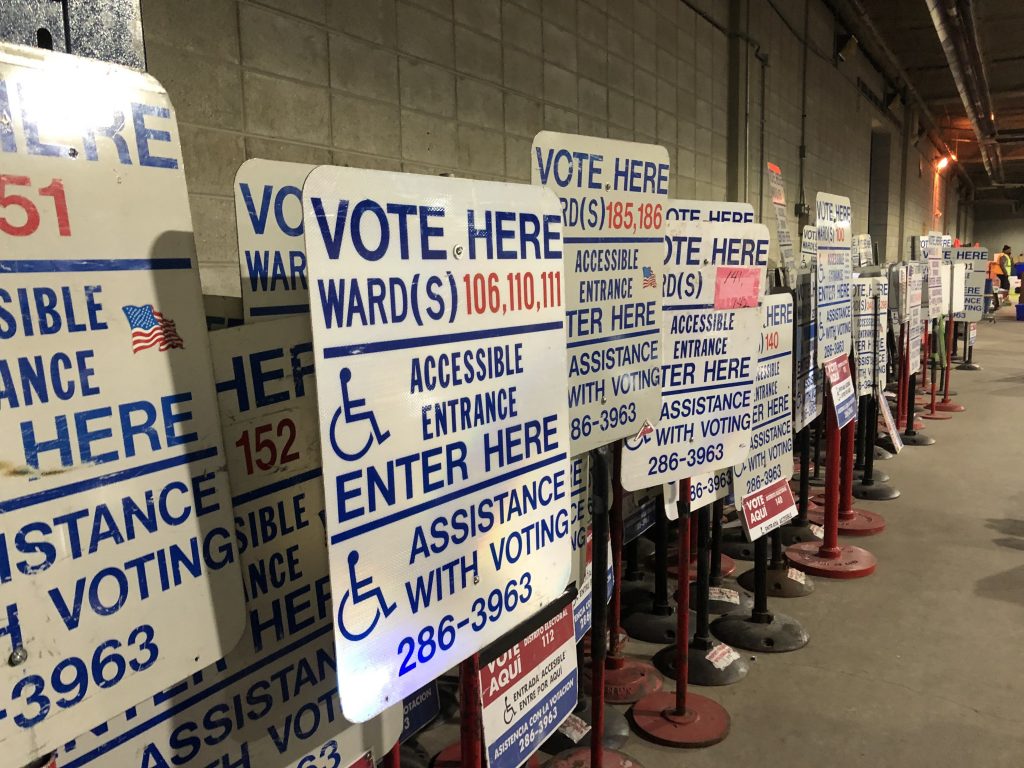Would Ranked Choice Voting Enhance Democracy?
Bill before state Legislature has more support from Democrats, but could help both parties.
It’s typically called ranked choice voting and is receiving increasing attention among election reformers.
For the first time, the Wisconsin Legislature held a public hearing on Senate Bill 528 and the matching Assembly Bill 563. Both bills are aimed at applying ranked choice voting to Wisconsin’s federal elections, those for U.S. Senate and U.S. House of Representatives. As presently written, the law would not apply to state offices. What is ranked choice voting and why are reformers embracing it?
In Wisconsin and many other states, elections to partisan offices currently start with a partisan primary. Some other states use party conventions to choose candidates. If several candidates are running, the person receiving a plurality of the votes becomes the party’s candidate in the general election. There is no requirement that the person receive a majority of the votes.
In the general election, the major party nominees are listed on the ballot along with third party nominees and those who qualified as individuals. In most states, including Wisconsin, the candidate with the most votes wins. Again, the candidate with the plurality of the votes wins.
In ranked choice voting, partisan primaries are replaced by a nonpartisan primary open to any candidate who meets the state’s requirements, sometimes called a “jungle” primary. In SB 528, the five candidates receiving the most votes in the primary proceed to the general election. As a result, the bill describes the procedure as a “Top-five primary.” The two states currently using ranked choice voting, Maine and Alaska have a top four primary.
Candidates surviving the jungle primary proceed to the general election. Voters rank the candidates in order of preference. If any candidate receives a majority of the vote that candidate is elected. If no one gets a majority, the candidate with the fewest first choice ratings is eliminated. Votes for the eliminated candidate are redistributed to the remaining candidates based on the voters’ next highest rated candidate.
This process is repeated until one candidate receives a majority or the votes. As a result, ranked choice voting is sometimes called “instant runoff” voting. A few states, mainly in the south, mandate a runoff election a few weeks later between the two top vote-getters if no candidate receives a majority of the votes.
Whatever its name, ranked choice voting has received a much more favorable response among Democrats than Republicans. This is illustrated by the response to SB 528.
The Wisconsin Ethics Commission lists seven organizations that have registered to lobby for or against SB 528. Three are registered in opposition: Heritage Action for America, Wisconsin Manufacturers & Commerce, and Opportunity Solutions Project. The latter group “seeks to improve lives by advocating for public policies based on the principles of free enterprise, individual liberty, and a limited, accountable government.” All three groups are conservative.
In contrast, groups supporting the bill include Democracy Found Action, the Greater Madison Chamber of Commerce, the Wisconsin Democracy Campaign, and the Take Back Action Fund. Apart from the Take Back Action Fund none of these groups are conservative.
The hostility on the right to ranked choice voting is also reflected in a report from the Wisconsin Institute for Law and Liberty, which mainly argues that it does not accomplish the goals its supporters claim. An article in the National Review with the title “Jungle Primaries and Ranked-Choice are Bad. Combining them is Worse” mainly attacks the implementation of ranked choice in Alaska.
Given this hostility on the right, it is a hopeful sign that 11 of SB 528’s cosponsors are Republicans. But consider Senate Joint Resolution 94, which was proposed in December with 26 cosponsors. SJR 94 would amend the Wisconsin Constitution to prohibit the use of ranked choice voting. Not surprisingly, this list is heavily weighted with MAGA true believers, those who contend the 2020 election was stolen.
Perhaps the most obvious benefit of ranked choice voting is that it solves the third-party quandary. Most third parties share values and goals with one or another of the two major parties, Thus, they hurt the major party that these voters would otherwise support. This is bad for the third party, which may be blamed for an election loss. This hurts the major party which loses potential voters. And it means that the voters who choose the third party effectively throw away their vote.
The third-party quandary is not limited to parties and voters on the left. John Pudner, the Take Back Action Fund President, breaking with conservative orthodoxy by supporting SB 528, points out that the right also has its own possible third-party problem. Pudner points to the Wisconsin vote in the 2020 presidential election.
His argument goes like this: Joe Biden won Wisconsin by about 20,000 votes. Three other candidates together received a total of almost 50,000 votes. All appear to have appealed to conservative voters. Under ranked choice, these voters could have listed one of these three candidates as their first choice and Donald Trump as their second. Would they have done so? If half of them did, Trump would have won Wisconsin.
However, this conclusion is not a slam dunk. Perhaps these voters were never-Trumpers who voted for one of the three candidates precisely because they disliked Trump.
Or they could have voted for one of these candidates because they disagreed with Trump and the Republican party because of issues. For example, the candidate who received over 38,000 of the 50,000 votes is a libertarian who opposes any restrictions on abortion. Would that candidate’s supporters want to vote for a candidate who promised to appoint Supreme Court justices who would overturn Roe v. Wade?
Despite the opposition to ranked choice voting on the right, there is no indication that it favors Democratic candidates over Republican ones. What its advocates do hope for is a less divisive politics, partly by getting rid of the very partisan primaries and partly encouraging candidates who are able to reach out to voters who are not part of their base.
Legislation Link - Urban Milwaukee members see direct links to legislation mentioned in this article. Join today
Related Legislation: Senate Bill 528, Senate Joint Resolution 94
Data Wonk
-
Why Absentee Ballot Drop Boxes Are Now Legal
 Jul 17th, 2024 by Bruce Thompson
Jul 17th, 2024 by Bruce Thompson
-
The Imperial Legislature Is Shot Down
 Jul 10th, 2024 by Bruce Thompson
Jul 10th, 2024 by Bruce Thompson
-
Counting the Lies By Trump
 Jul 3rd, 2024 by Bruce Thompson
Jul 3rd, 2024 by Bruce Thompson





















